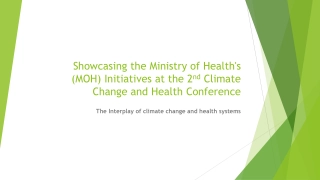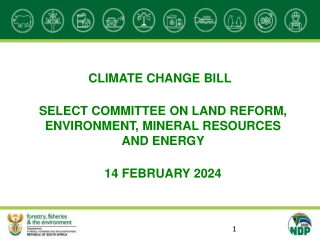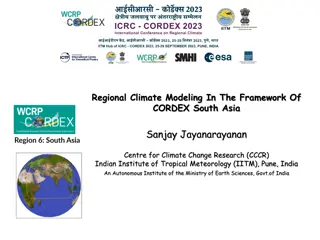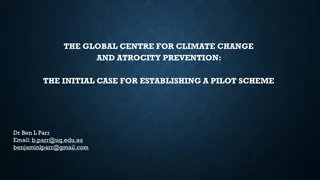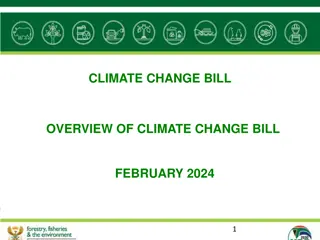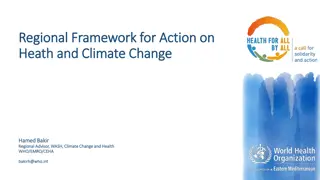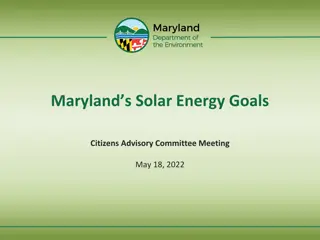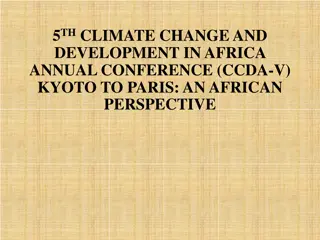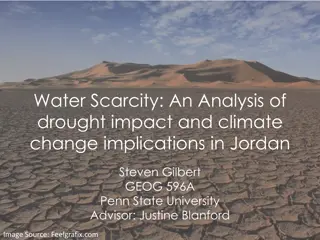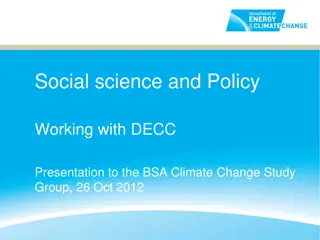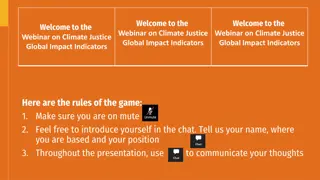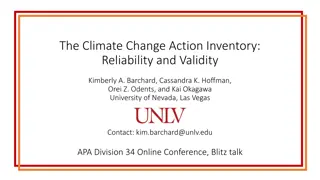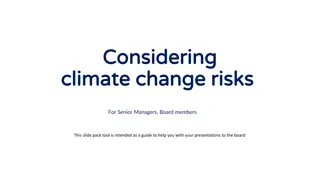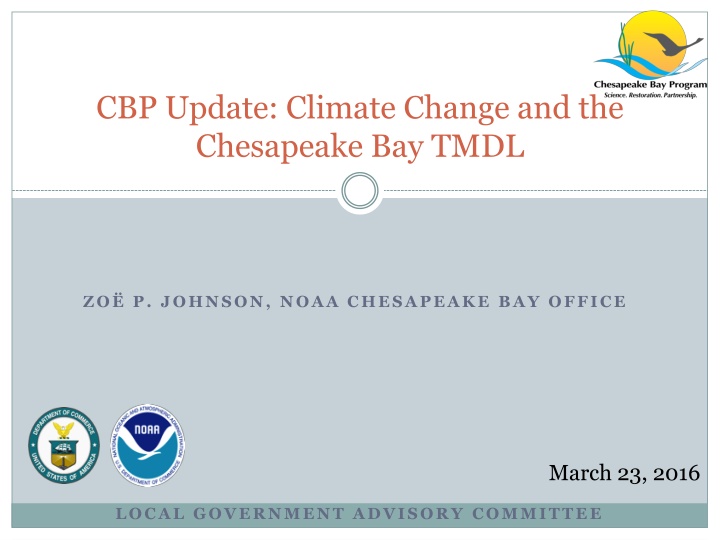
Climate Change Impact on Water Quality Standards in the Chesapeake Bay
This update discusses the incorporation of climate change considerations into the Chesapeake Bay Total Maximum Daily Load (TMDL) program, emphasizing policy options, assessment procedures, and guiding principles for addressing potential impacts on water quality standards. The focus is on developing strategies to mitigate the effects of climate change on nutrient and sediment sources, with an emphasis on resilience and adaptability in the implementation of Best Management Practices (BMPs).
Download Presentation

Please find below an Image/Link to download the presentation.
The content on the website is provided AS IS for your information and personal use only. It may not be sold, licensed, or shared on other websites without obtaining consent from the author. If you encounter any issues during the download, it is possible that the publisher has removed the file from their server.
You are allowed to download the files provided on this website for personal or commercial use, subject to the condition that they are used lawfully. All files are the property of their respective owners.
The content on the website is provided AS IS for your information and personal use only. It may not be sold, licensed, or shared on other websites without obtaining consent from the author.
E N D
Presentation Transcript
CBP Update: Climate Change and the Chesapeake Bay TMDL ZO P. JOHNSON, NOAA CHESAPEAKE BAY OFFICE March 23, 2016 LOCAL GOVERNMENT ADVISORY COMMITTEE
Climate Change & the TMDL Mid-Point Assessment Assessment Procedures Policy Options Quantitative Qualitative Assess how climate change may affect current water quality standards (i.e., nutrient and sediment source loads over time and attainment ) Guiding Principles WIP Development WIP Implementation
Policy Options Quantitative Qualitative Factor Climate Change into Phase III WIP Base Conditions: Use either the 2025 or 2050 climate projection scenarios as base conditions (informed by CBWM climate modeling results) in the establishment of the jurisdictions Phase III WIPs. The climate change projection would be an added load that the jurisdictions would need to address in addition to their Phase III WIP planning targets, thereby increasing the level of effort. Optimize Phase III WIP Development and Adaptively Manage BMP Implementation: During the development of Phase III WIPs, jurisdictions will prioritize BMPs that are more resilient to future climate impacts over the intended design life of the proposed practices. During each two-year milestone development period, jurisdictions will consider new information on the performance of BMPs and the programs that support them, including the contribution of seasonal, inter- annual climate variability and weather extremes. Jurisdictions will assess this information and adjust plans to implement their Phase III WIPs to better mitigate anticipated increases in nitrogen, phosphorus or sediment due to climate change. Jurisdictions would provide a narrative consistent with the Guiding Principles that describes their programmatic commitments to address climate change in their Phase III WIPs. Policy Option Language approved by PSC Policy Option Language proposed by CRWG
Guiding Principles WIP Development Capitalize on Co-Benefits maximize BMP selection to increase climate or coastal resiliency, soil health, flood attenuation, habitat restoration, carbon sequestration, or socio-economic and quality of life benefits. 1. Align with existing climate resiliency plans and strategies align with implementation of existing greenhouse gas reduction strategies; coastal/climate adaptation strategies; hazard mitigation plans; floodplain management programs; fisheries/habitat restoration programs, etc. 2. Account for and integrate planning and consideration of existing stressors consider existing stressors such as future increase in the amount of paved or impervious area, future population growth, and land-use change in establishing reduction targets or selection/prioritizing BMPs. 3. Manage for risk and plan for uncertainty employ iterative risk management and develop robust and flexible implementation plans to achieve and maintain the established water quality standards in changing, often difficult-to-predict conditions. 4.
Guiding Principles WIP Implementation Reduce vulnerability - use Climate-Smart principles to site and design BMP s to reduce future impact of sea level rise, coastal storms, increased temperature, and extreme events on BMP performance over time. Vulnerability should be evaluated based on the factor of risk (i.e. consequence x probability) in combination with determined levels of risk tolerance, over the intended design-life of the proposed practice. 6. Build in flexibility and adaptability - allow for adjustments in BMP implementation in order to consider a wider range of potential uncertainties and a richer set of response options (load allocations, BMP selections, BMP redesign). Use existing WIP development, implementation and reporting procedures, as well as monitoring results and local feedback on performance, to guide this process. 7. Engage Local Agencies and Leaders work cooperatively with agencies, elected officials, and staff at the local level to provide the best available data on local impacts from climate change and facilitate the modification of existing WIPs to account for these impacts. 8.
Local Government Advisory Committee Areas for Future Engagement Participation and Input Engage in the policy dialog related to integrating climate change into the Mid-Point Assessment, Phase III WIPS, and beyond Identify Local Government Technical assistance needs

